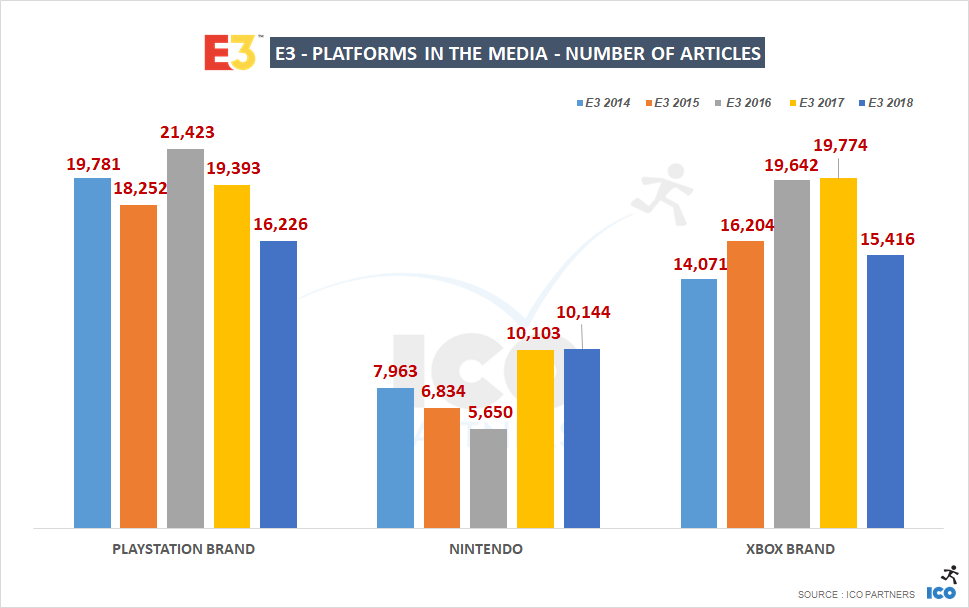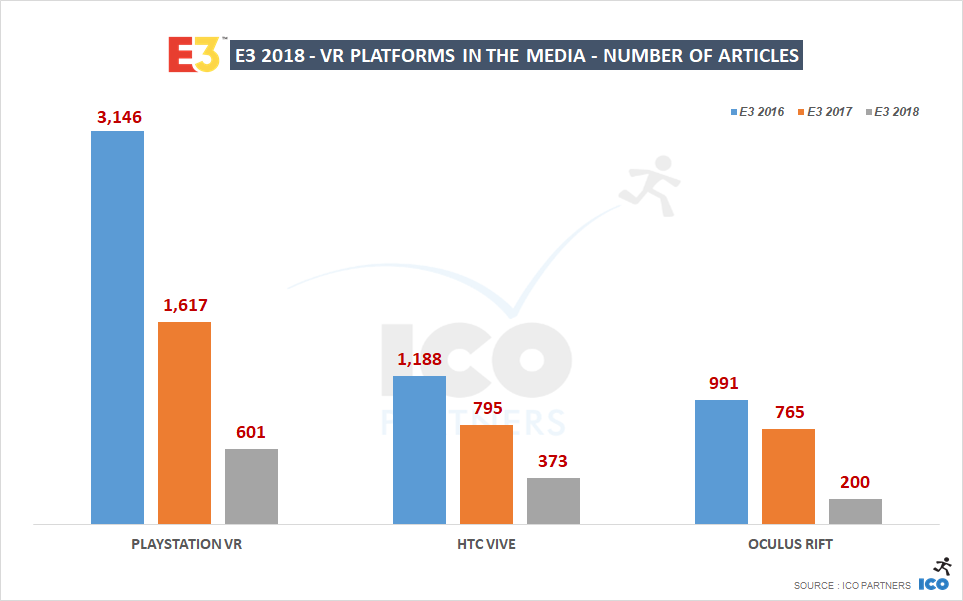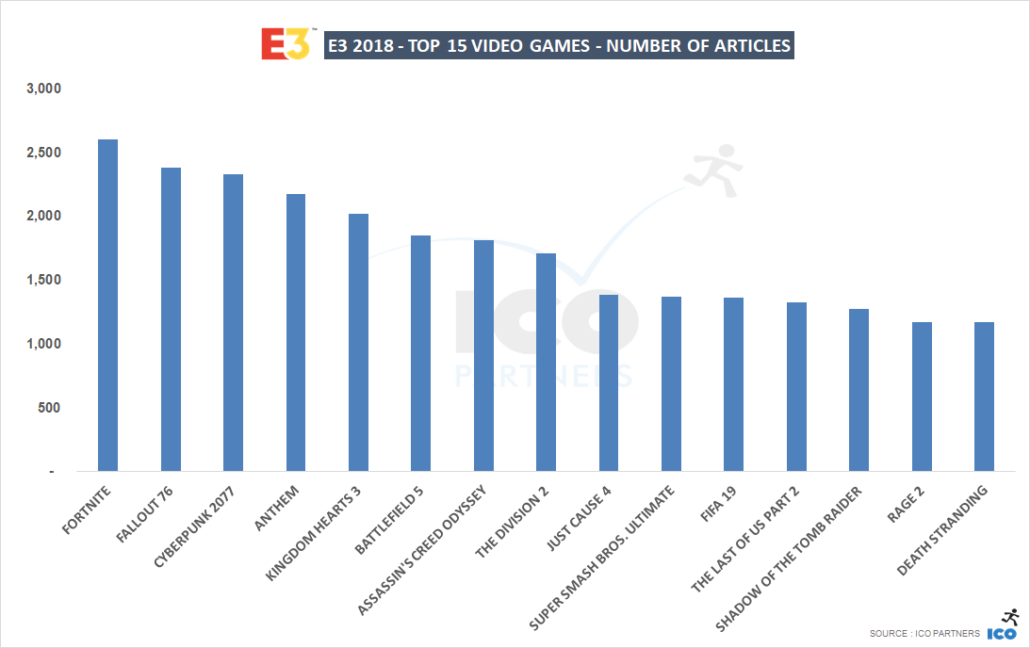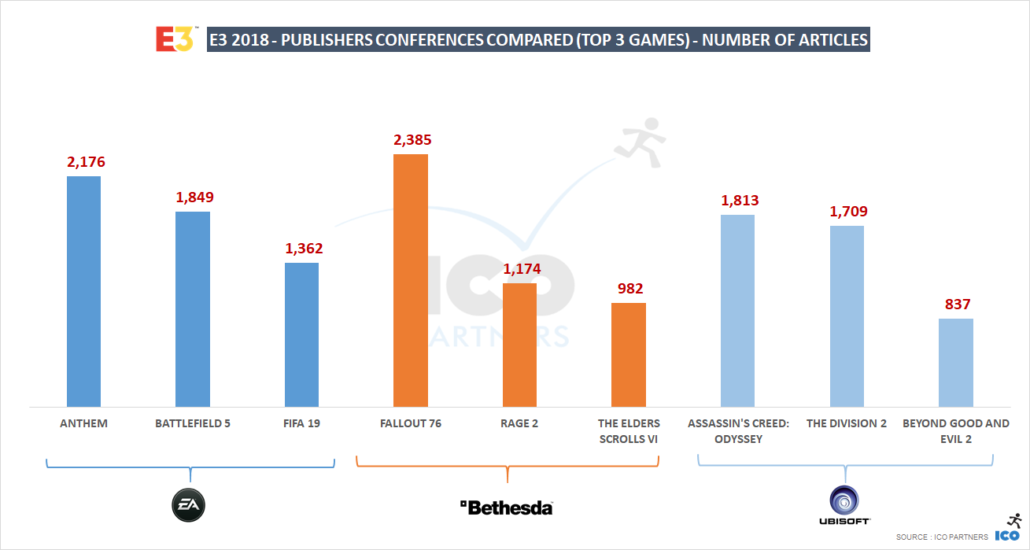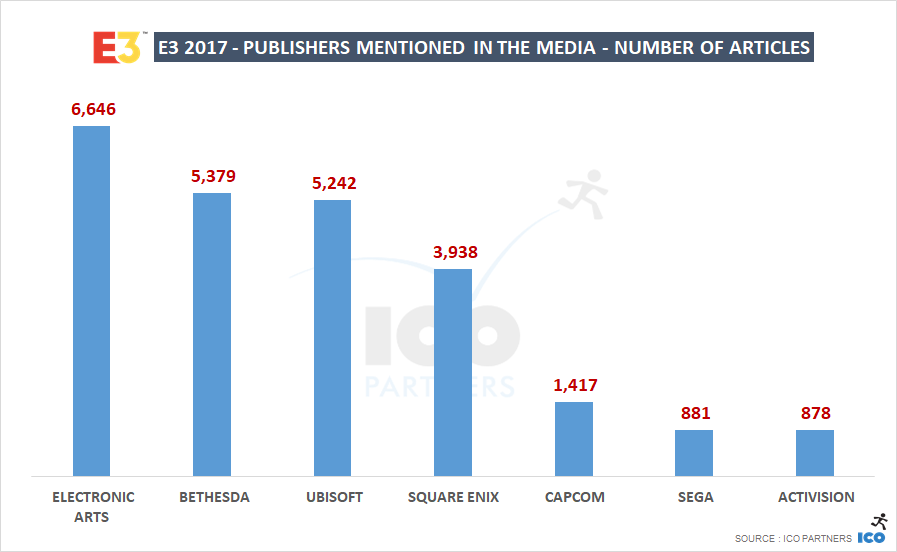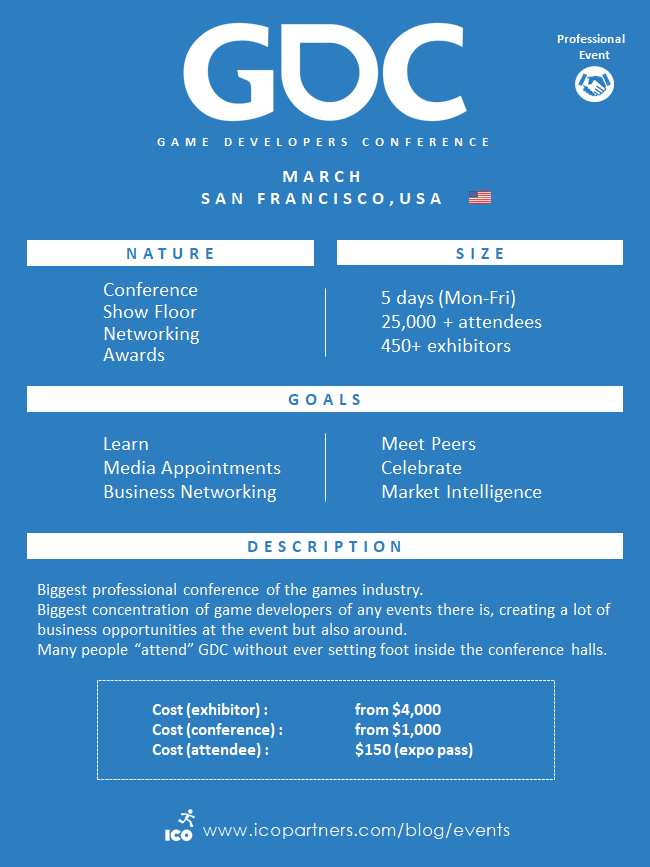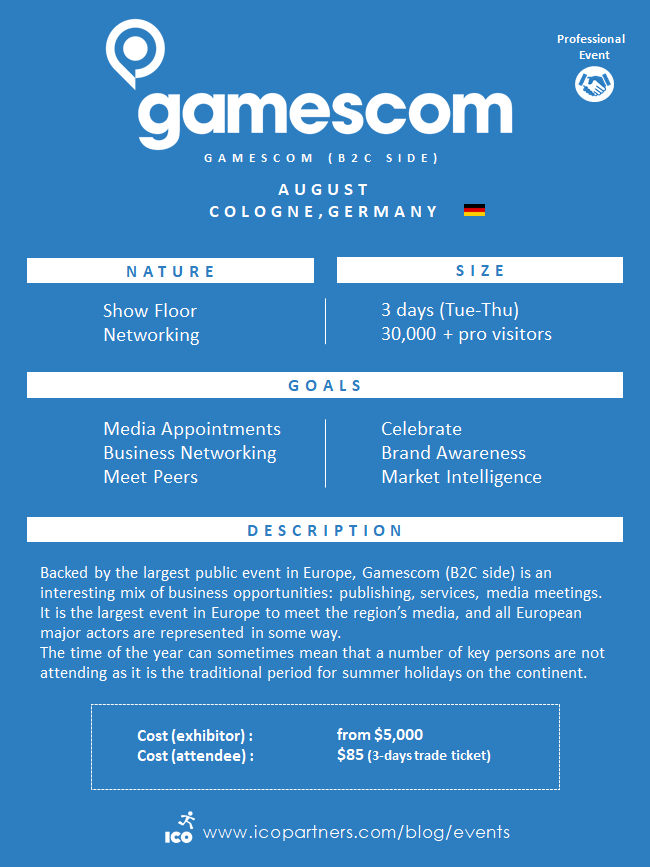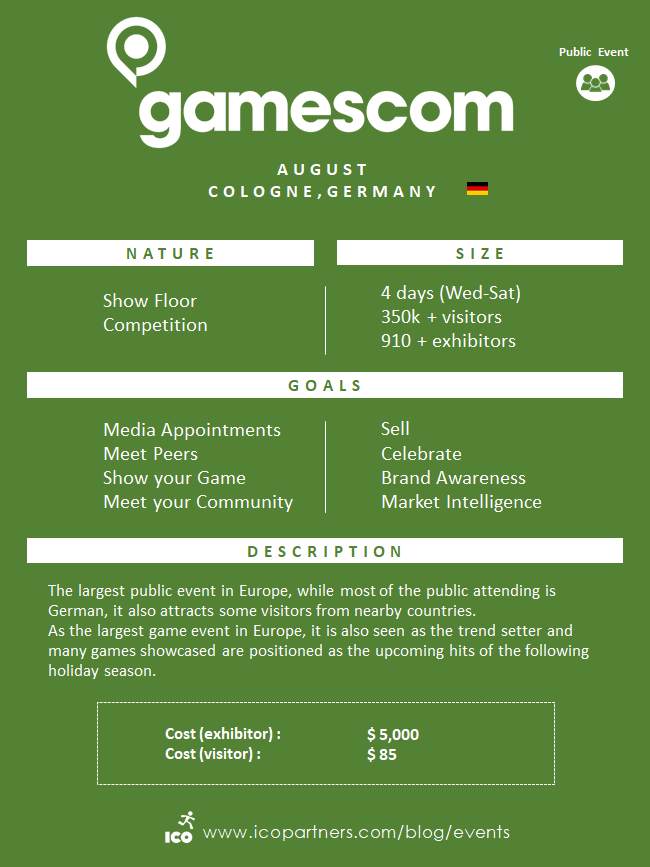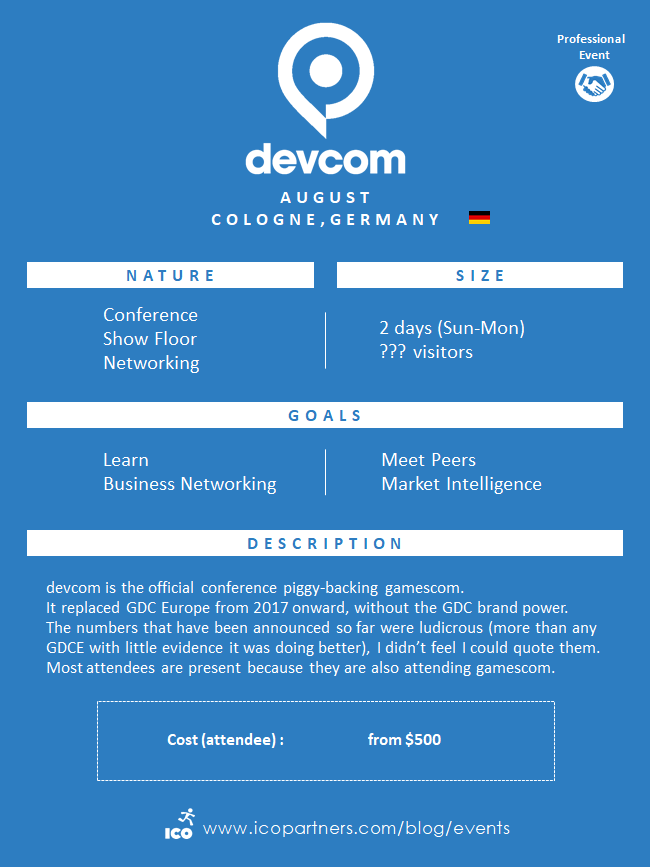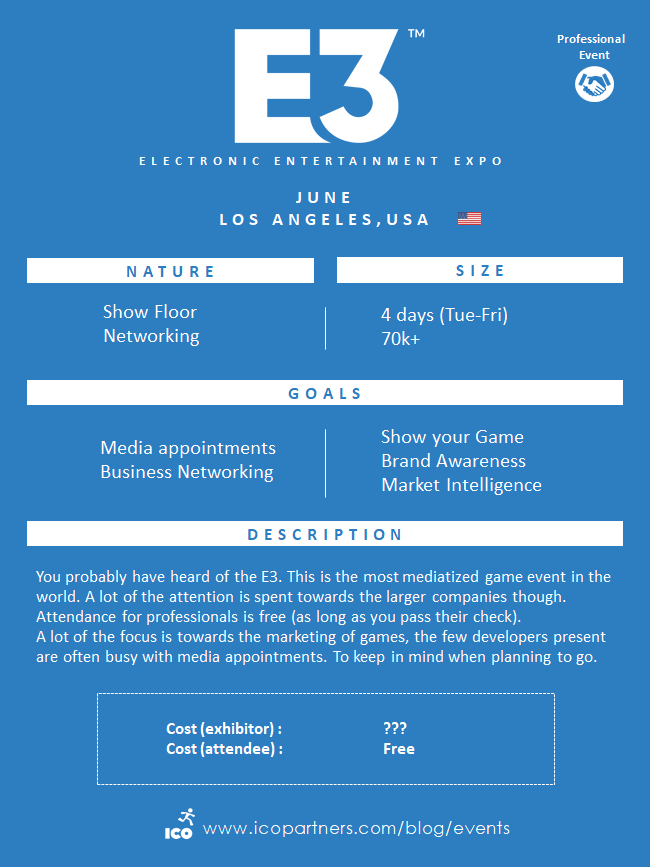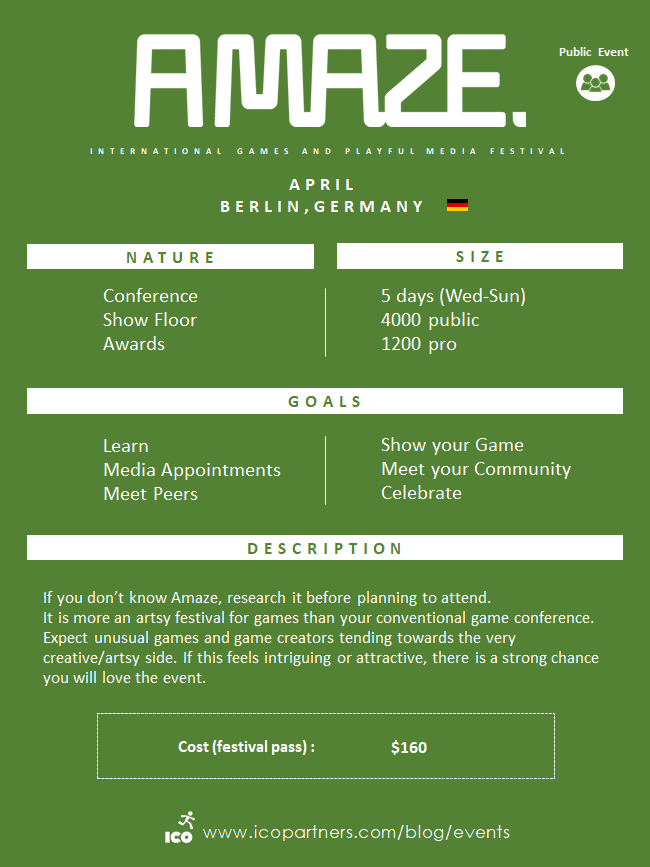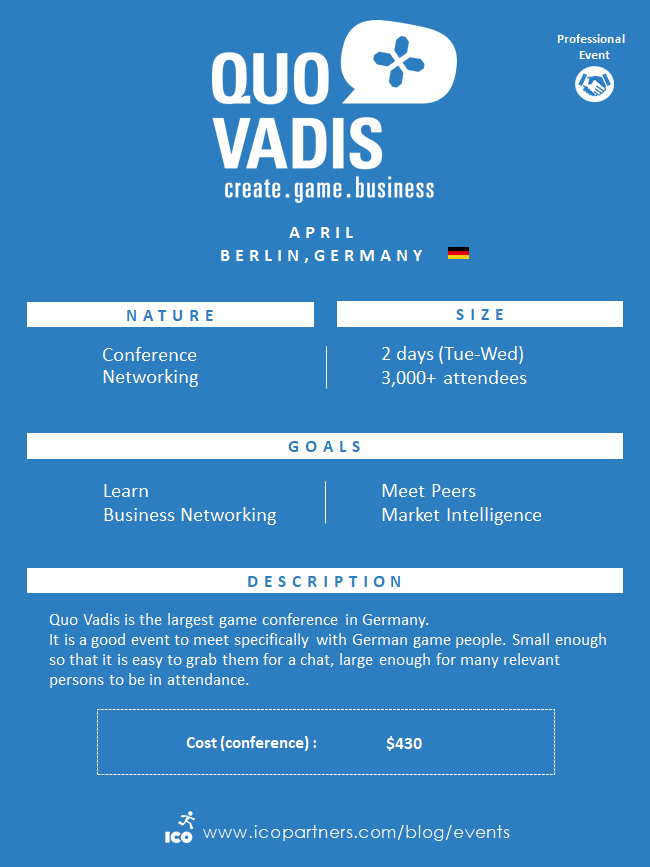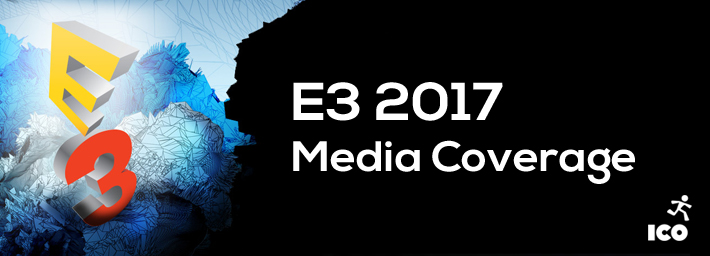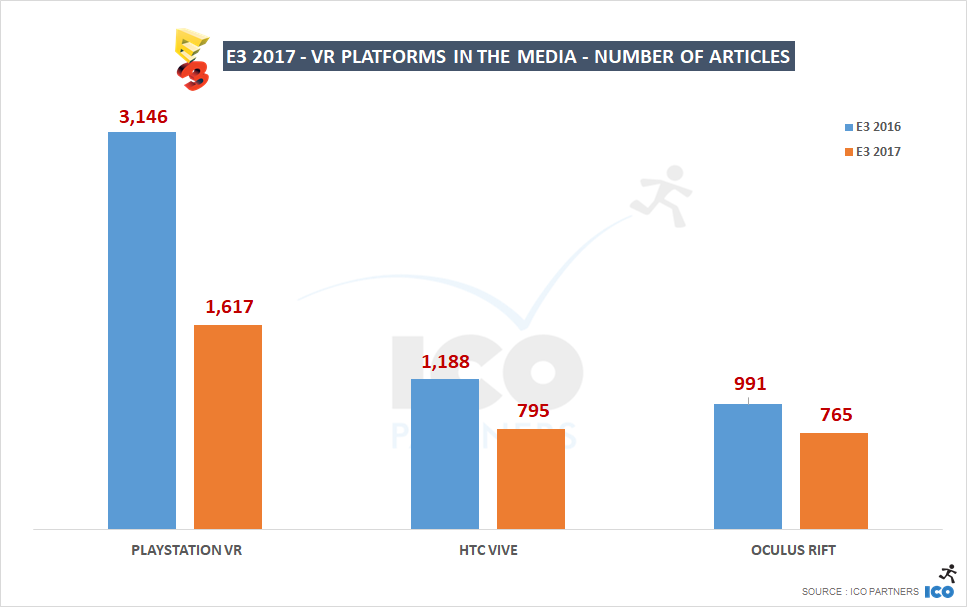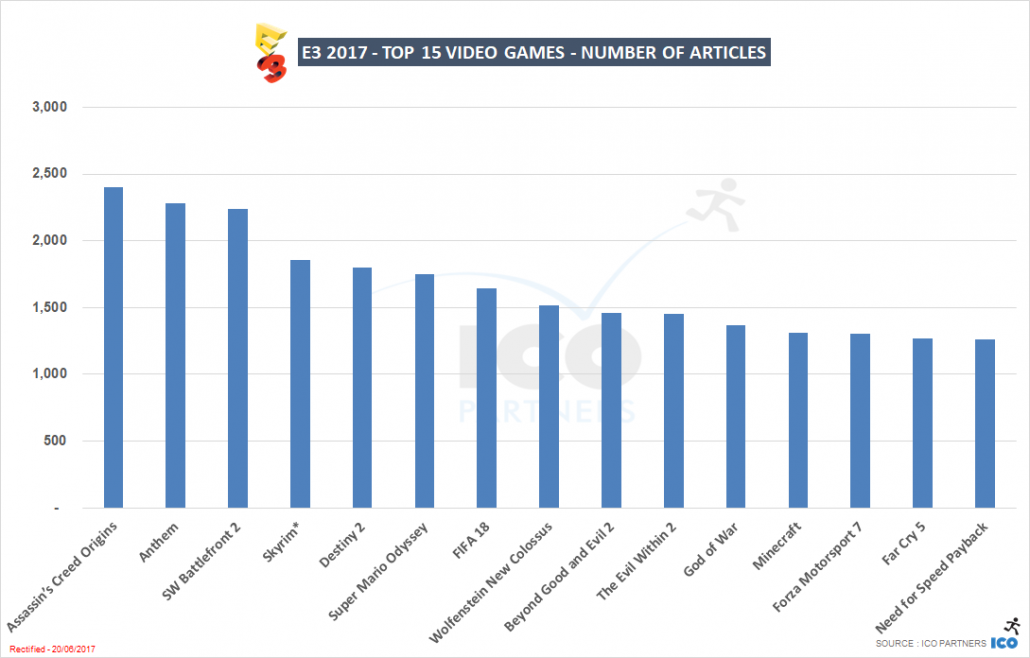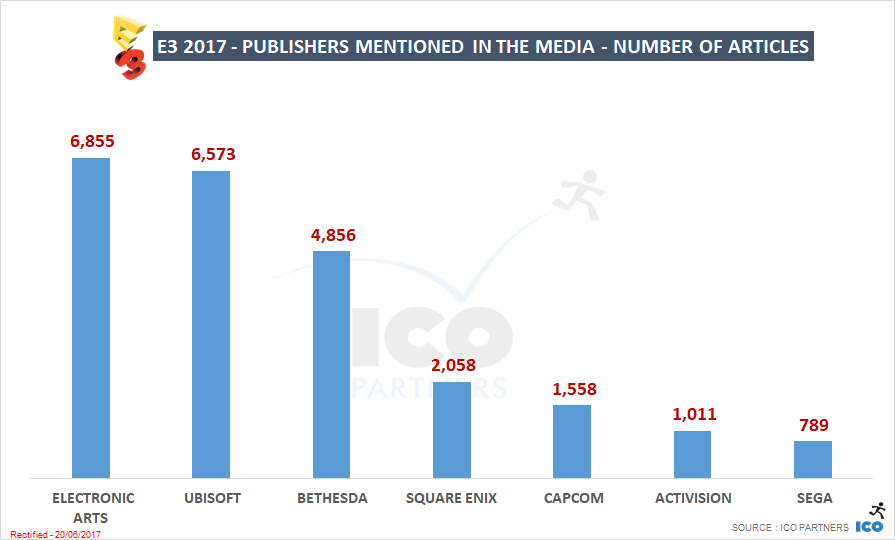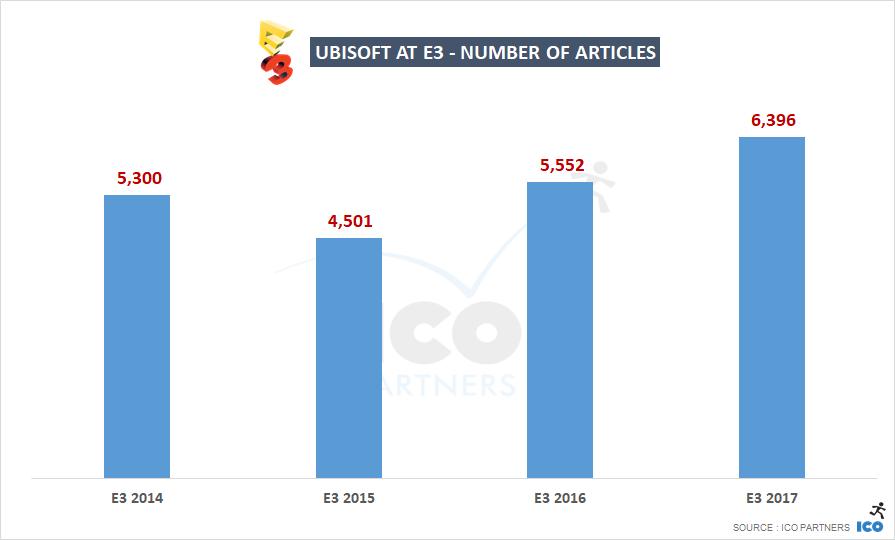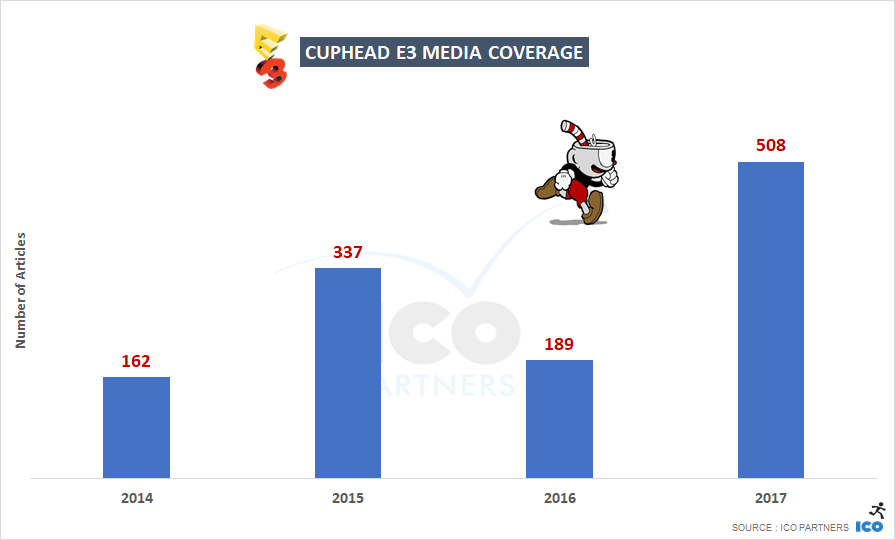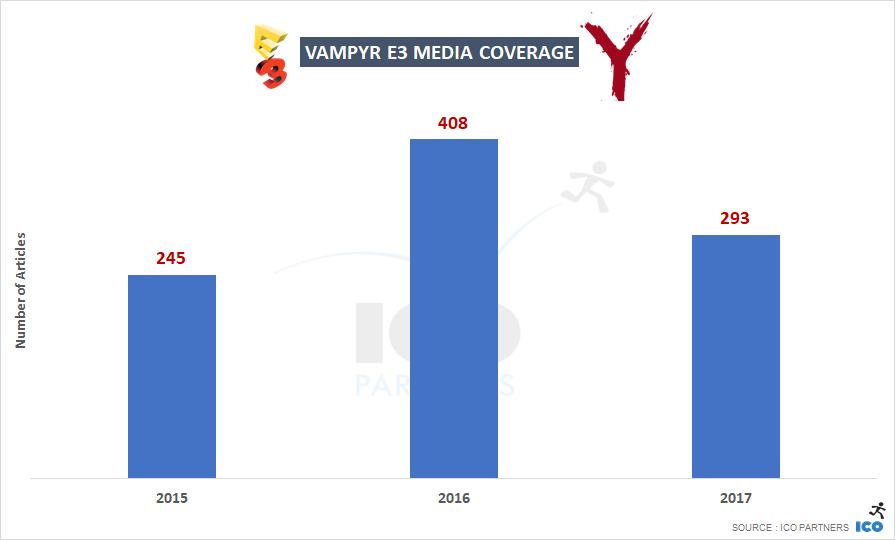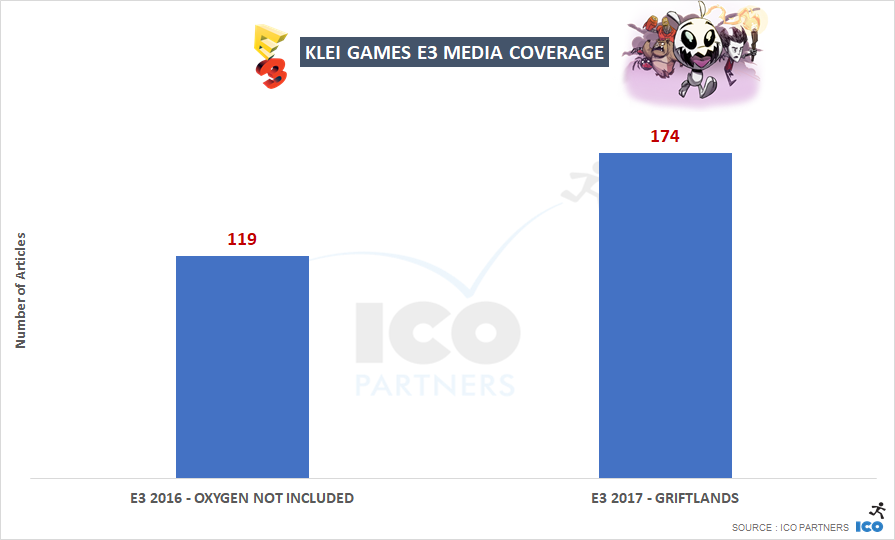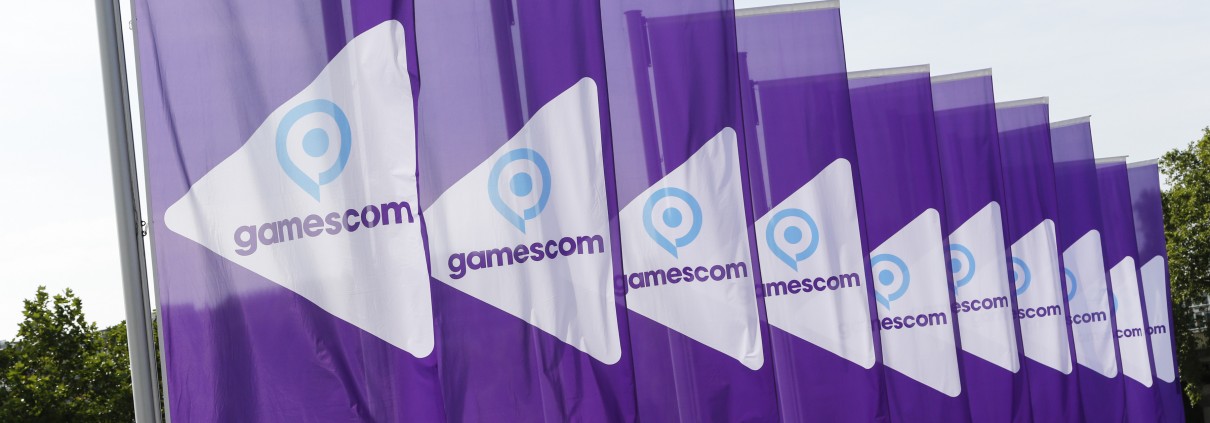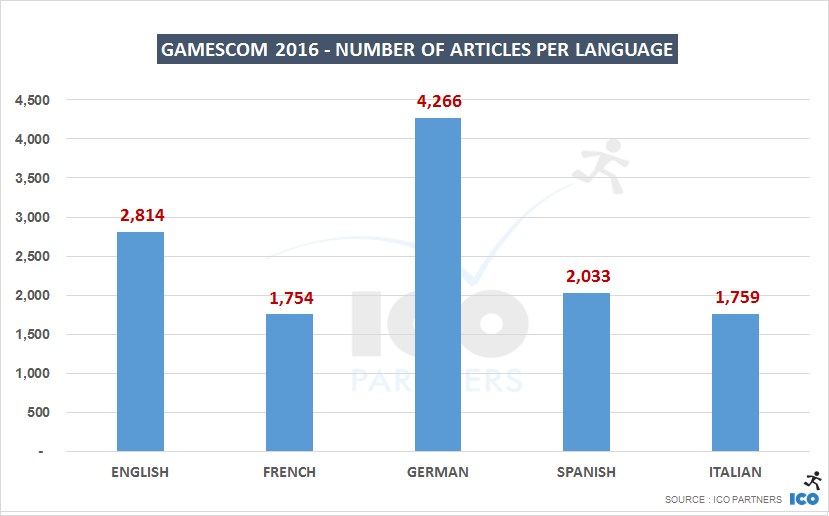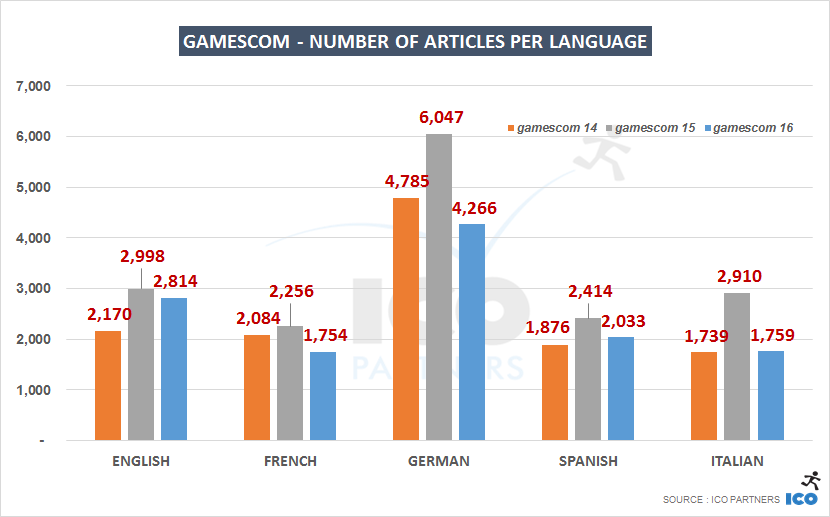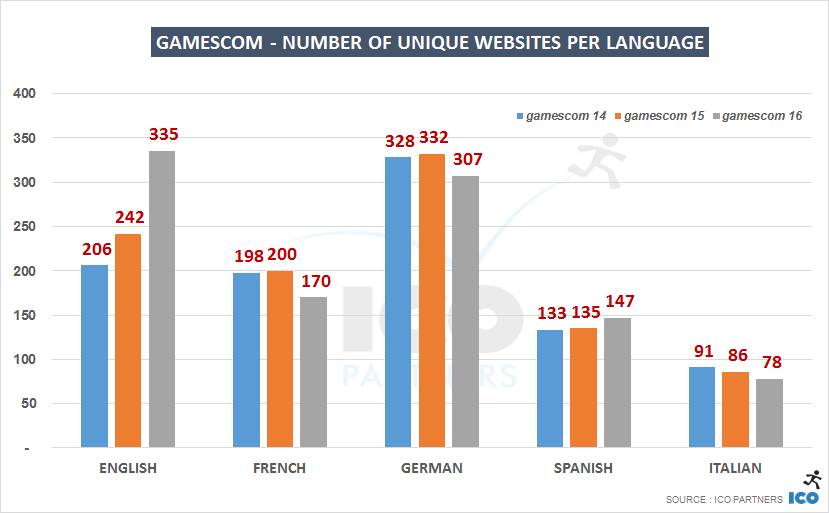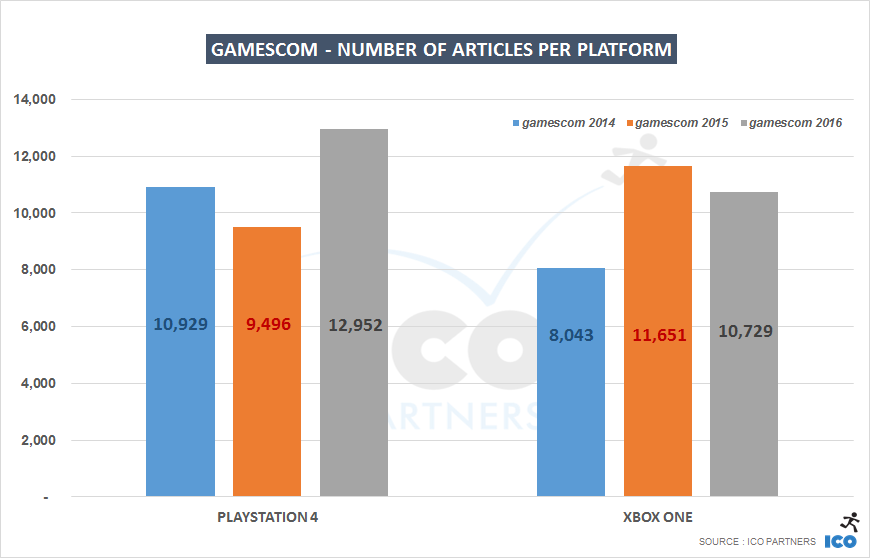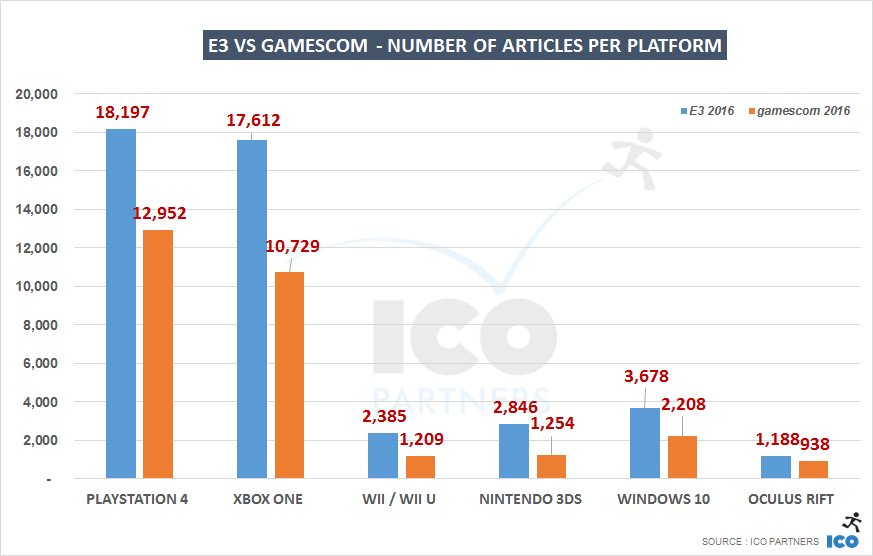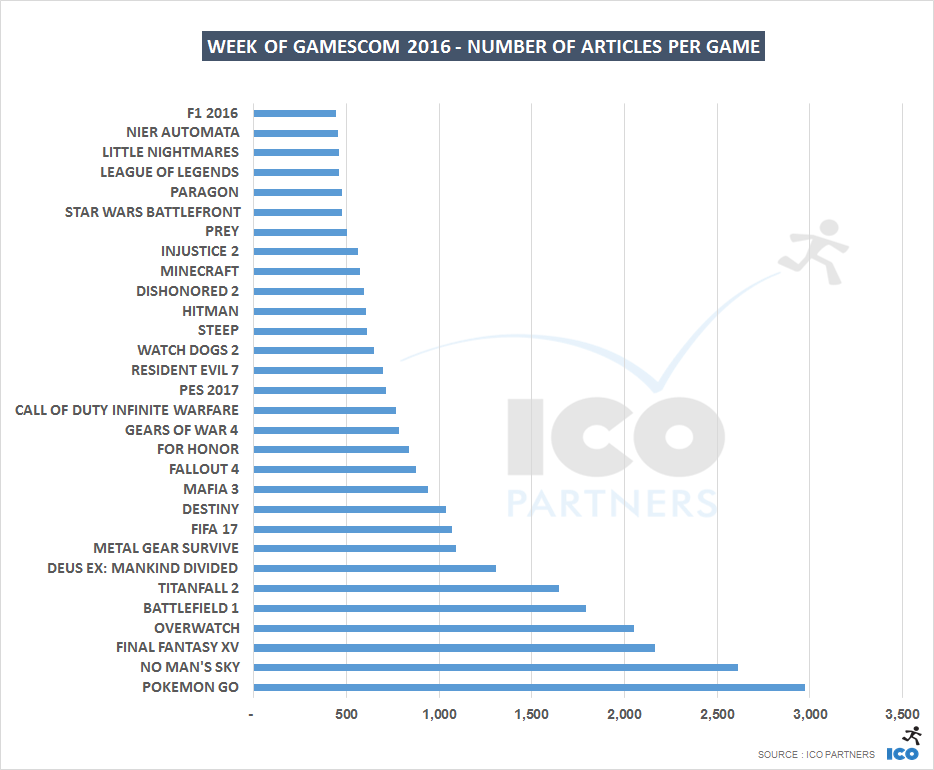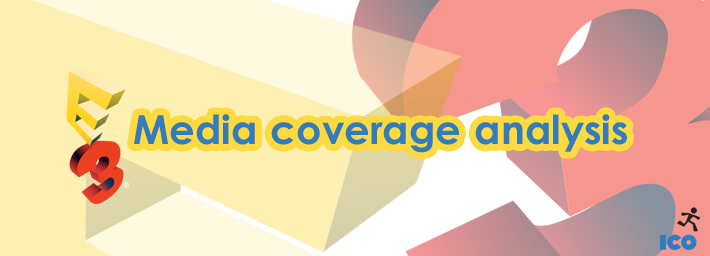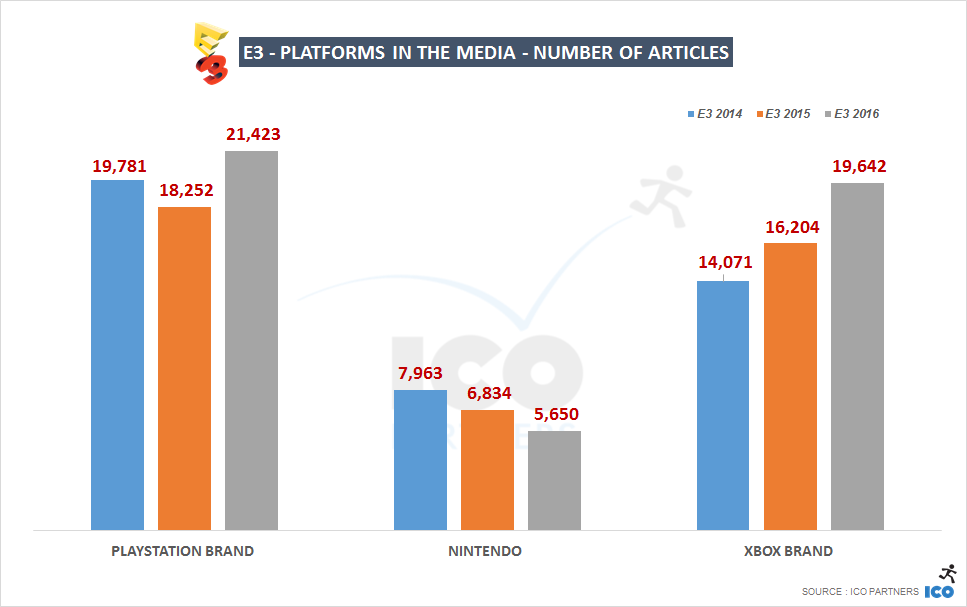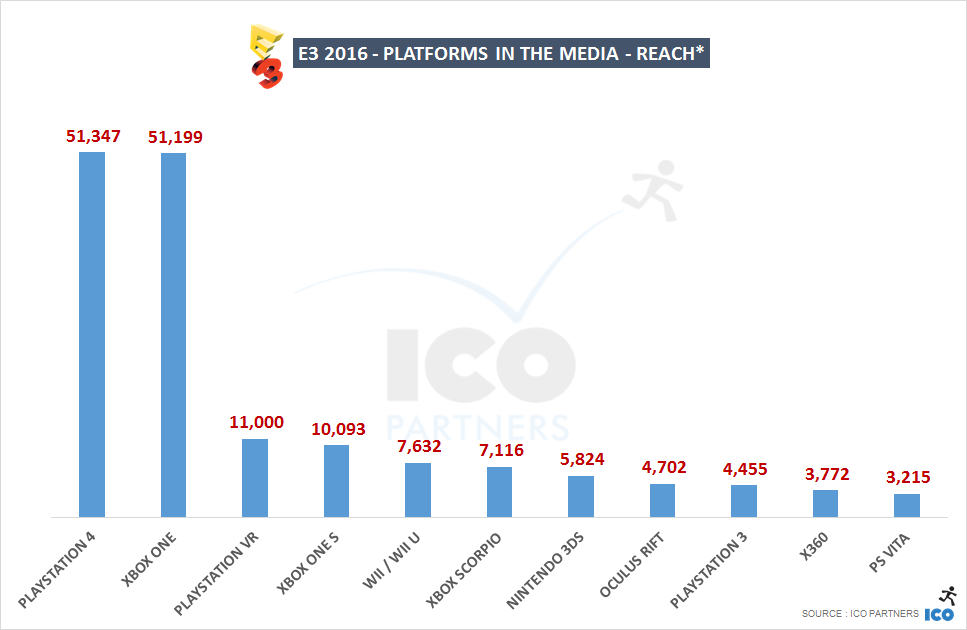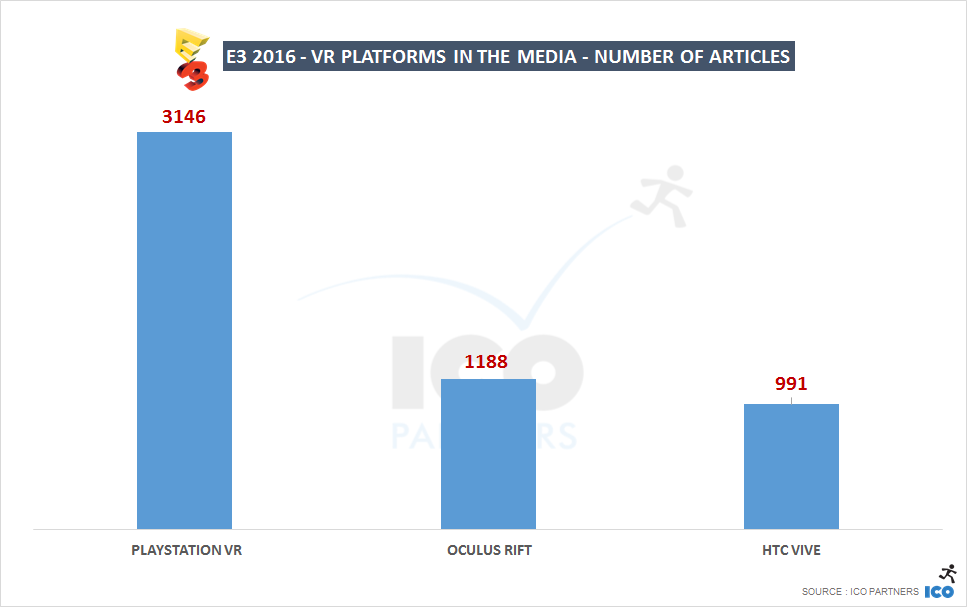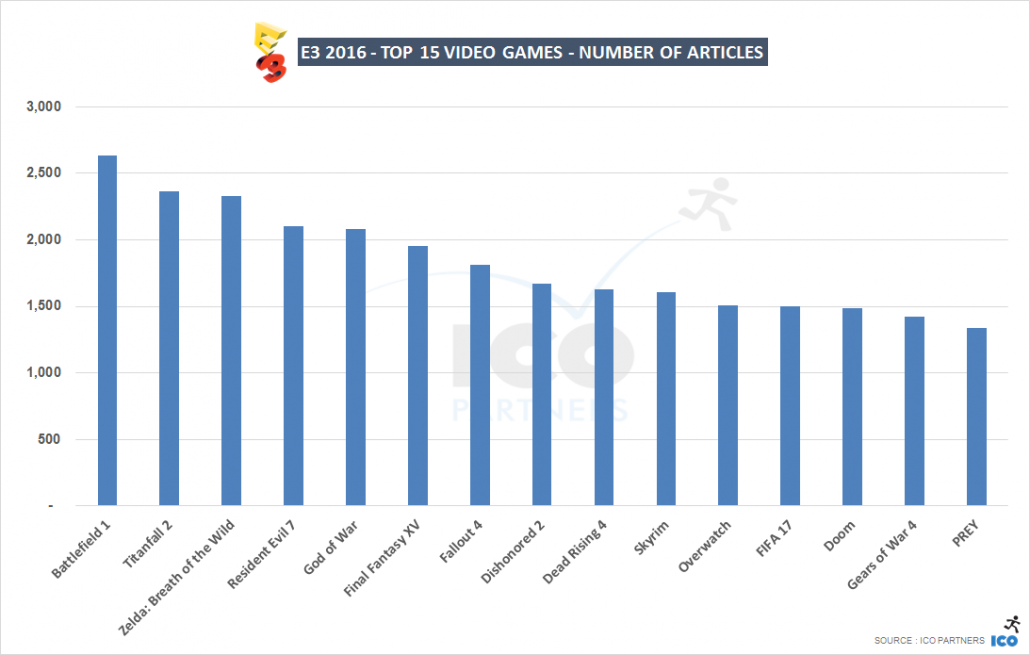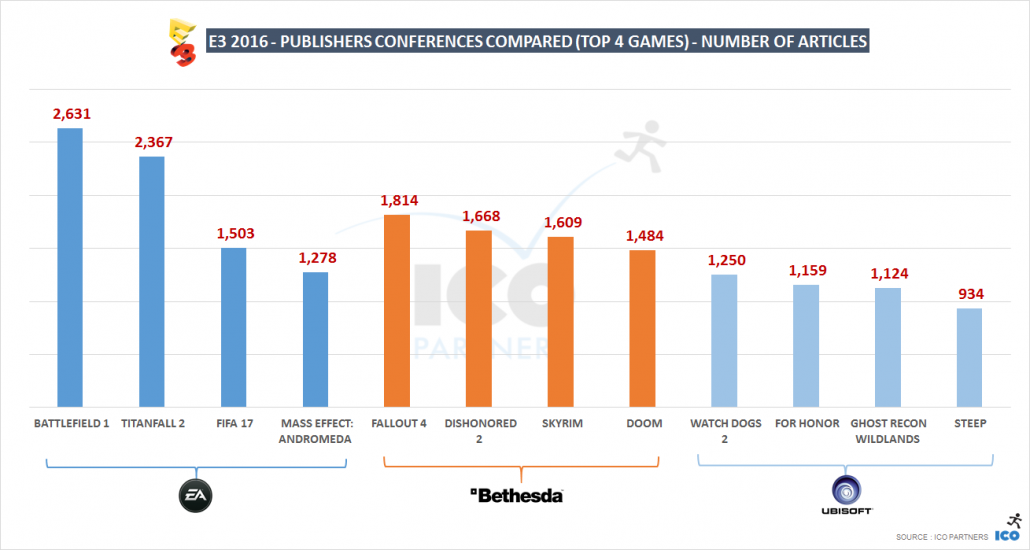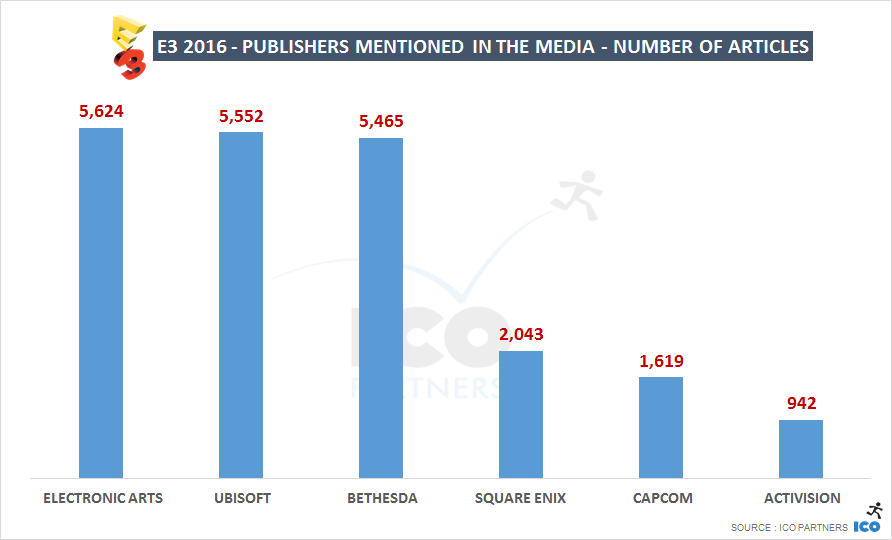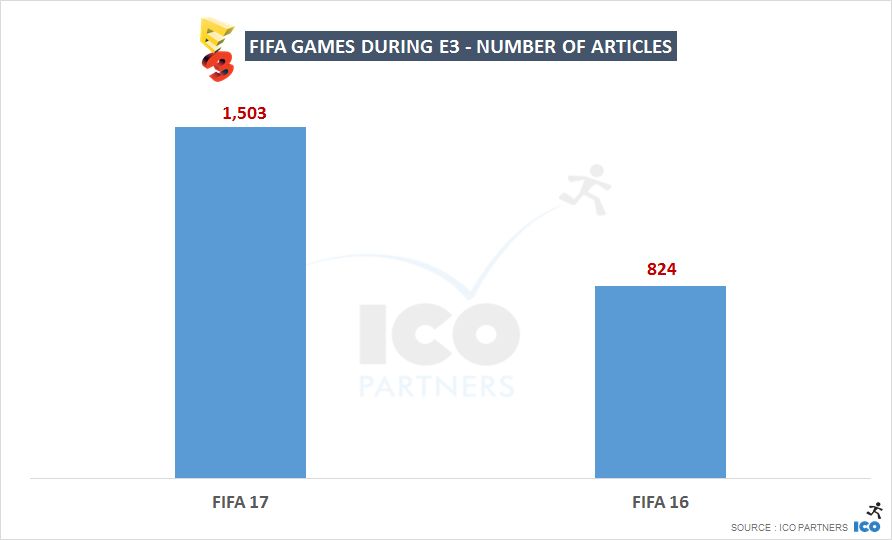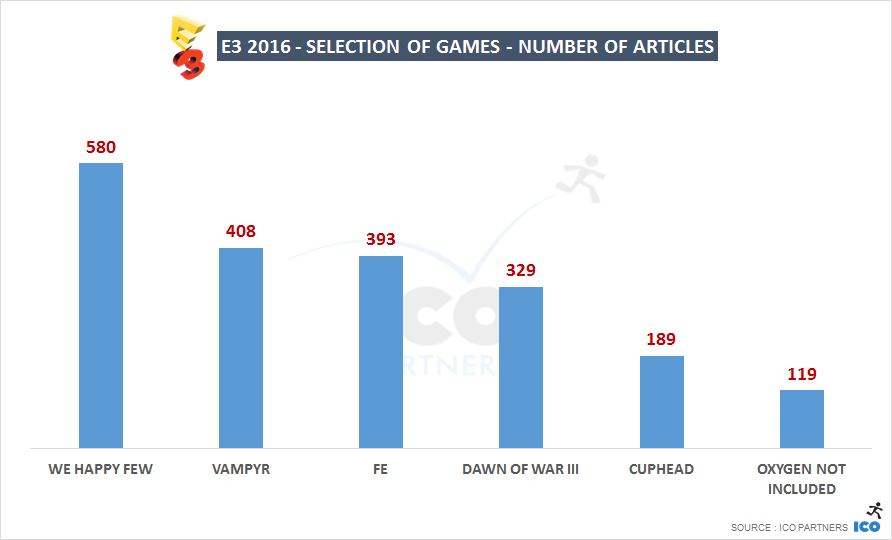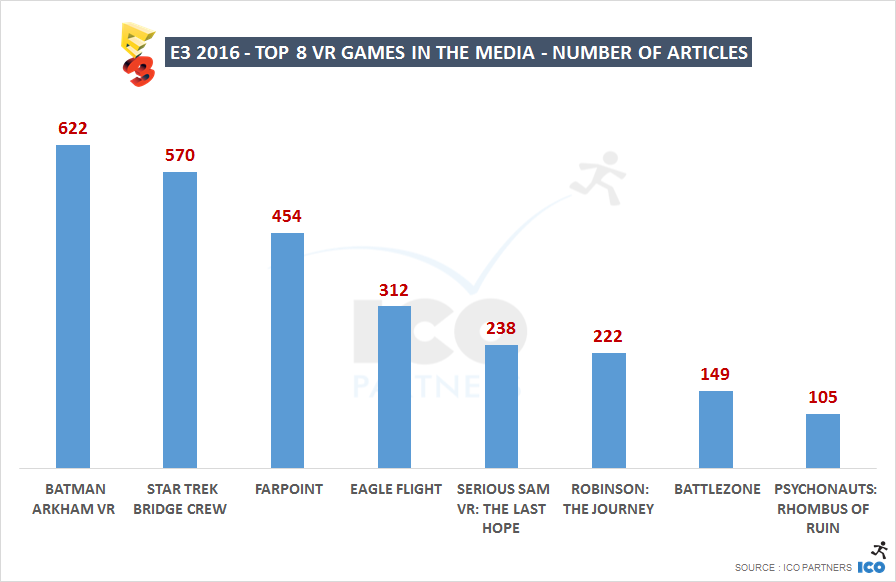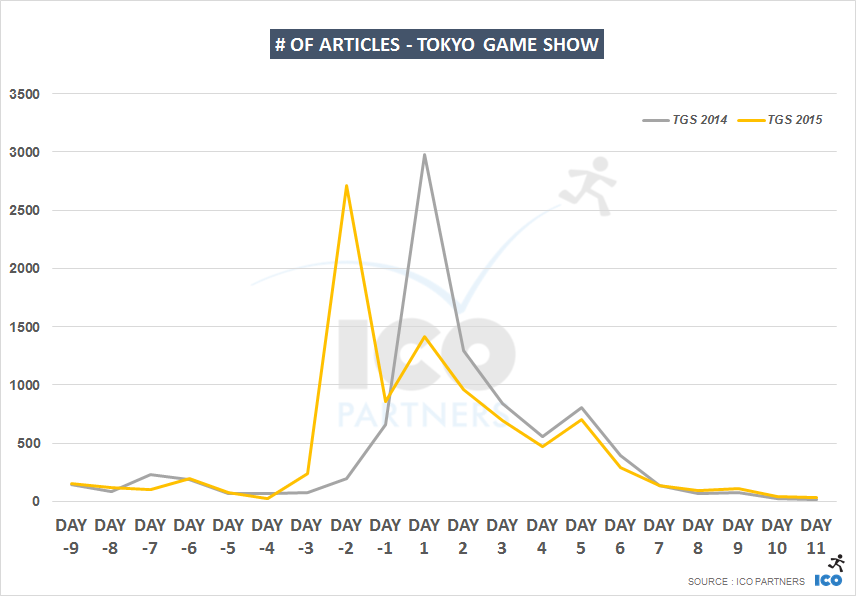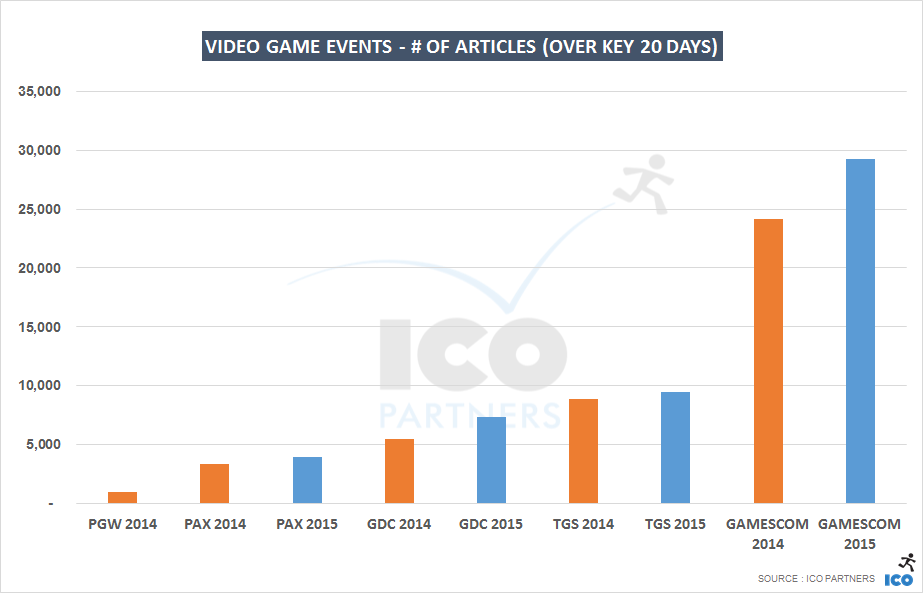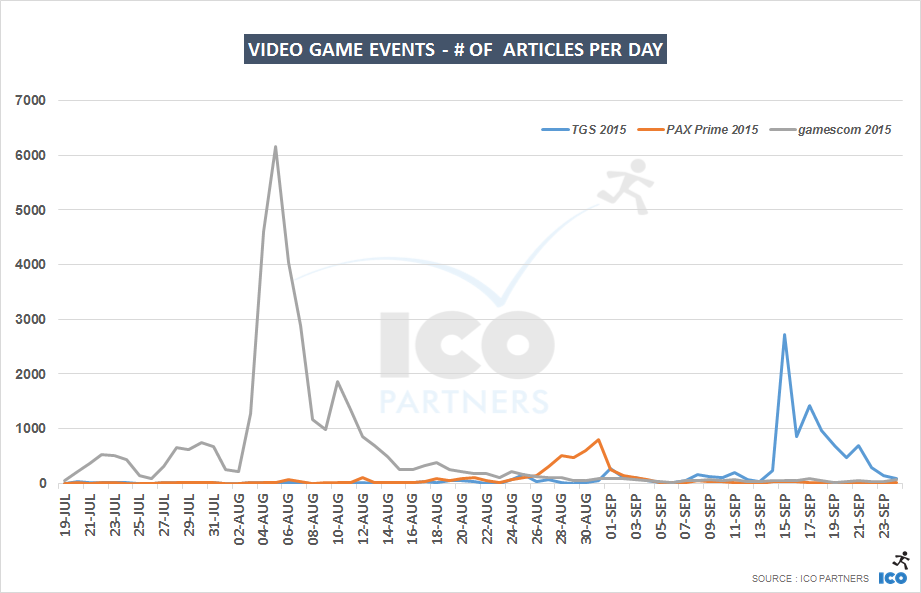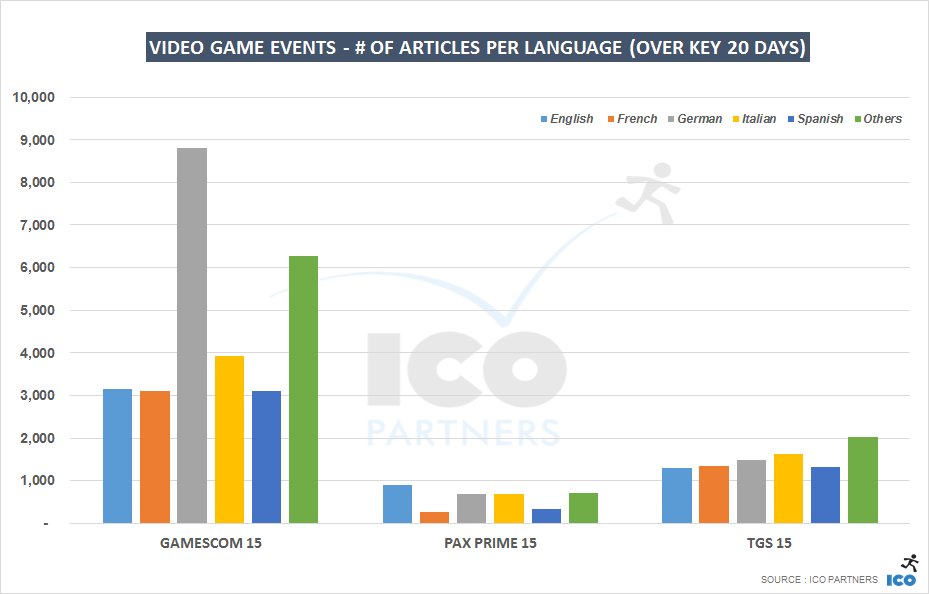Like every year, this is the time for a look at the performance of the many E3 announcements in terms of media coverage.
If this the first time you read about our analysis, you can find out more about the methodology used, and read the blog posts for 2015, 2016, and 2017.
Overall trend
Starting with 2016, I set up a media tracker to measure the media coverage for the E3 itself. It tracks all the articles that mention the event, and is a good indicator of the scale of a particular year’s crop.
As you can see, 2018 was a decline year in terms of total volume of media articles mentioning the event. I am not sure this should be particularly worrying, or even surprising. While there were great games revealed during the week, it was also particularly light on industry-changing announcements.
We are well into the cycle of this generation of consoles, while the rumours on the next gen are growing, there was nothing to feed many articles. The same goes for new technologies, like VR and the impact it had over the past two E3s.
It’s good to note that there has been a decline, and while it is merely a 5.5% drop, for an event of that scale, it could be an indicator of a trend.
Platforms
Looking at the performance of the key brands for the consoles, the downward trend is much more significant. It is the worst year for the PlayStation since we started measuring, and the worst year for Microsoft since 2014.
I have to confess I am surprised that Microsoft’s performance ended being at this level. I felt they had a very good conference, and while their line-up is still behind, they had better announcement than last year. It seems like it wasn’t enough to compensate a hardware communication, like the Xbox One X and the Xbox One S last year.
As for Nintendo, 2018 was their best year, even if, arguably, the volume of articles mentioning them is very close to last year’s.
This validates very much Nintendo’s strategy to not have a traditional press conference. At the very least, it doesn’t seem to prevent them to secure a significant volume of media coverage. Nintendo also benefitted for the first time in a while from the media coverage around 3rd party titles, with their Fortnite announcement being spot on with the current Battle Royale frenzy.
Looking at the specific platforms mention, we find the same ranking in the top 3. What is significant though here is that the platforms outside of these three consoles have ridiculously low coverage numbers compared to previous years.
And in case you were wondering, E3’s fling with VR is mostly over.
Games
This is my read on those numbers:
- Fortnite had so much going for it during the week of E3: Nintendo Switch port, Celebrity Pro Am event, and the controversy around the crossplay restrictions on the PlayStation 4. Add to this that Fortnite has been a very popular game with the media in the past few months, it doesn’t come as a surprise it managed to dominate here.
- Fallout 76 is following in the steps of Fallout 4 when it was first showed at E3 in 2015. It has not dominated the way F4 did then, but it makes sense for the game to be so well covered.
- Cyberpunk 2077 is the real winner for me. While it didn’t get the most coverage, it certainly did very well for an “original” IP, surfing on the media interest for The Witcher series, and the high expectation everyone has for the next CD Project rpg.
- Super Smash Bros. Ultimate is the first console-exclusive of that ranking, beating The Last of Us part 2, an upset in my mind.
Looking at the most mentioned games from the three largest studios with a press event, this year’s numbers are lower than last year’s.
It is quite notable in the case of EA’s games. There has been a decline in the coverage received for their most covered games compared to last year’s. It might come from the fact the lack of renewal of their franchise, considering their 3 most covered in 2017 were Anthem (same as this year, without the novelty factor), Star Wars Battlefront 2 (another FPS from DICE), and FIFA 18 (yearly cycle doesn’t help standing out).
On the overall coverage mentioning the publishers’ brand, Electronic Arts is still ahead. The notable changes from last year is the relative growth of Bethesda’s presence, taking the second spot away from Ubisoft that saw a drop. Also interesting is the seemingly lack of interest in Activision in this year’s E3, losing its ranking at 6th to SEGA.
Closing Words – A Storm is Brewing
This E3 was very much an intermerdiary year. Despite some very exciting games being revealed, the overall numbers are lower than previous year. It sets up 2019 to be a very exciting edition.
I am also looking forward to the next press conferences from Nintendo and Sony, who have not been shy in keeping bombshell announcements for their non-E3 communications.



